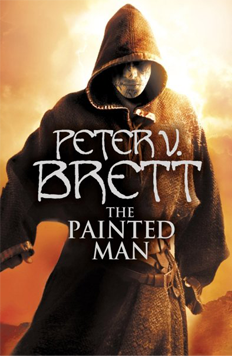I came across this book as a result of picking up its sequel, Twilight Robbery, at an otherwise uninspiring discount book shop in South Africa. I loved the sequel so much that I immediately tracked down Fly By Night, which I think is one of my most favourite books ever. I later discovered that Frances Hardinge, the author, had been a student at Somerville College, and all her books are actually in the library, so I could have read them both for free. But that’s another story.
Fly By Night tells of the adventures of Mosca Mye, named for Goodman Palpitattle, ‘He Who Keeps Flies out of Jams and Butterchurns’. Mosca is the daughter of deceased revolutionary Quillam Mye, who has done her a great disservice by teaching her how to read, and naming her after the common Housefly. Mosca lives in the perpetually drenched village of Chough, which can be found ‘by straying as far as possible from anywhere comfortable or significant, and following the smell of damp’.
The story opens with Mosca’s decision to escape Chough, along with her trusty homicidal goose Saracen. On her way out, Mosca sets fire to a mill, and rescues the amoral but articulate Eponymous Clent, who has been put in the stocks for fraud. Together, they make their way to the City of Mandelion, where they proceed to cause all kinds of trouble.
The chapters are charmingly titled alphabetically, beginning with ‘A is for Arson’ and ‘B is for Blackmailing’, going through other criminal offences including ‘M is for Murder’, finally arriving at ‘R is for Redemption’, and ending with ‘V is for Verdict’. Mosca and Clent become involved in a complex series of political upheavals involving the Duke of Mandelion, Vocado Avourlace, and his sister the Lady Tamarind, as well as assorted revolutionaries and religious fanatics, and a girl who refers to herself as Cakes.
The City of Mandelion is in the Fractured Realm, a sort of parallel of 18th-Century England that incorporates some elements of Romanian tradition. The Realm is Fractured because there is no clear successor to the king who was decapitated some time before, so each City supports their Monarch-of-Choice, and life in general is controlled by the Guilds. The Guild of Stationers is in control of all books, while the Guild of Locksmiths aspires to be in charge of everything.
In Fly By Night, names are of great significance, as each person is named for the ‘Beloved’, the religious personages of the Fractured Realm, who presides over the hour of their birth. It is assumed, therefore, that the name of a person to some extent reflects their character. Mosca often laments her attachment to Palpitattle, but also looks to him for guidance in her times of need.
Fly By Night is a book about identity, belief and loyalty, as well as the role of intellectuals in a functional society, examined through the story of one angry girl, her homicidal goose, and her quest to find a place where she belongs. It is also a well-paced and exceptionally funny murder mystery set in a mock-18th century England. I loved both sides.





